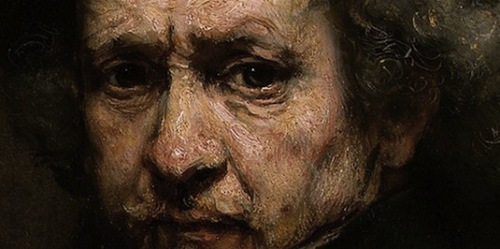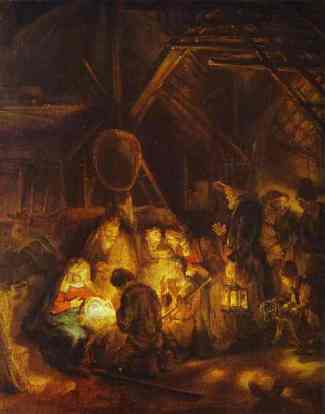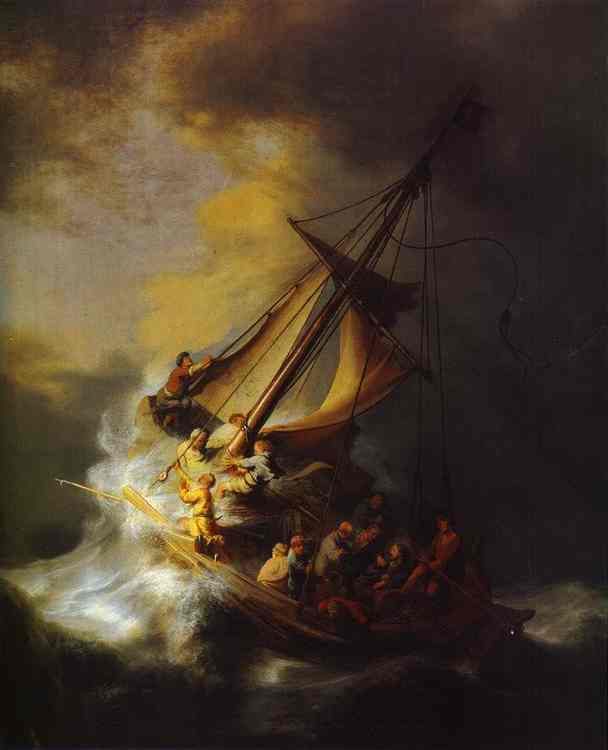Have you ever looked at an actual Rembrandt? I mean really looked? I have. And at the risk of sounding hyperbolic, it’s exhausting. Why? Because Rembrandt was a master. If you dare to look, he will provide for you more than you can take in. This is what masters do.

Rembrandt Harmenszoon van Rijn, a Dutch painter who lived from 1606-1669, has been widely regarded as one of the greatest painters Europe ever produced. Even while he lived people called him “the master,” and eager, rising artists would study under him, trying to reproduce his technique and form. The result of this, as German art historian Wilhelm von Bode noted, was that “Rembrandt painted 700 pictures. Of these, 3,000 are still in existence.”

Aside from his technical skill, Rembrandt was also a masterful storyteller, one canvas at a time. Every inch of a Rembrandt is filled with intentionality. His use of light to show you what matters (like the radiance coming from the manger in “The Adoration of the Shepherds”) and shadow to raise questions (like the dark figure in the upper left corner of his “Return of the Prodigal Son”) is often imitated, but never quite duplicated. His ability to capture furious motion in a single frame (like in “The Storm on the Sea of Galilee”) plays like an optical illusion.
I could go on and on, but I’ll leave the discovery of the great Dutch master’s bio and portfolio for you to chase down on your own. Enjoy.
Instead, I want to focus on something Rembrandt once said: “I can’t paint the way they want me to paint and they know that too. Of course you will say that I ought to be practical and ought to try and paint the way they want me to paint. Well, I will tell you a secret. I have tried and I have tried very hard, but I can’t do it. I just can’t do it!”
Rembrandt was no dummy. He knew he was a great artist, no question. But he also knew he wasn’t limitless. And one of his apparent limits was his inability to satisfy what people sometimes wanted him to be. This must have been very frustrating at times. Surely there must have been days when he would’ve loved more than anything else in the world to be for another person exactly who they wanted him to be.
He was incredibly gifted in certain areas — and for this history will never forget him — but when he tried to train his hands to create another man’s vision, he just couldn’t do it. Neither can I. Neither can you.
He had to train his hands to paint as he alone was meant to paint. And this means he must’ve started somewhere. It’s hard to imagine, but I bet there once existed some pretty terrible “Rembrandts.” Early works. What’s not hard to imagine is a solitary figure in a lamp-lit room mixing his oils, preening his brushes, thinking and painting and thinking and painting.
For what? For mastery. And why? For joy, because the mastery of something leads to a greater enjoyment of it. Singers, musicians, painters, writers, athletes, and artists of all stripes know this. The harder we work at something, the more we are able to enjoy it. Rembrandt knew it, too. Later, he would advise, “Practice what you know, and it will help to make clear what now you do not know.” Annie Dillard said it another way: “Who will teach me to write? The page, the page, that eternal blankness.”
All Rembrandt could do was paint and paint and paint. He couldn’t be a different painter. Only Rembrandt. And this is what he sought to master: how to be Rembrandt. When I stand before a Rembrandt painting, every fiber of my being knows I am in the presence of greatness. Sure, we’re talking about something human hands have made, but those hands are so distinct, so refined . . . Yet, I’m a fool if I don’t at least try to understand the joy that comes from mastery. And I’m also a fool if I don’t regard myself as his student in those moments when we’re in the room together.

A couple hundred years after Rembrandt’s death, there came another student of the Dutch master — the poor and lovely Vincent van Gogh — who said, “Rembrandt is so deeply mysterious that he says things for which there are no words in any language. Rembrandt is truly called a magician . . . [and] that is not an easy calling.”
Mastery doesn’t just produce stories. It considers how to tell them, and occasionally even provides new language when there are no words. The canvases Rembrandt left us do so much more than illustrate scenes from the Bible. They are like the picture of the Dawn Treader that sucked the Pevensies and Eustace into an adventure whose goal was to reach the end of everything in the hopes that Aslan would be all that remained.
What are you mastering? What are you practicing in order to make clear what you don’t yet know? If you’re anything like me, I’m sure you reach points where you begin to wonder if it might just be easier to plateau. And if not plateau, then quit altogether.
Don’t. Please. This world is short on masters, and consequently short on joy, too.
Russ Ramsey worked for The Art House back in the mid 90s before heading off to seminary. He and his family currently live in Nashville where he serves as one of the pastors at Midtown Fellowship. He is also a regular contributor at The Rabbit Room and authored the book Behold the Lamb of God: The True Tall Tale of the Coming of Christ, an advent companion to Andrew Peterson's record by the same name.



















